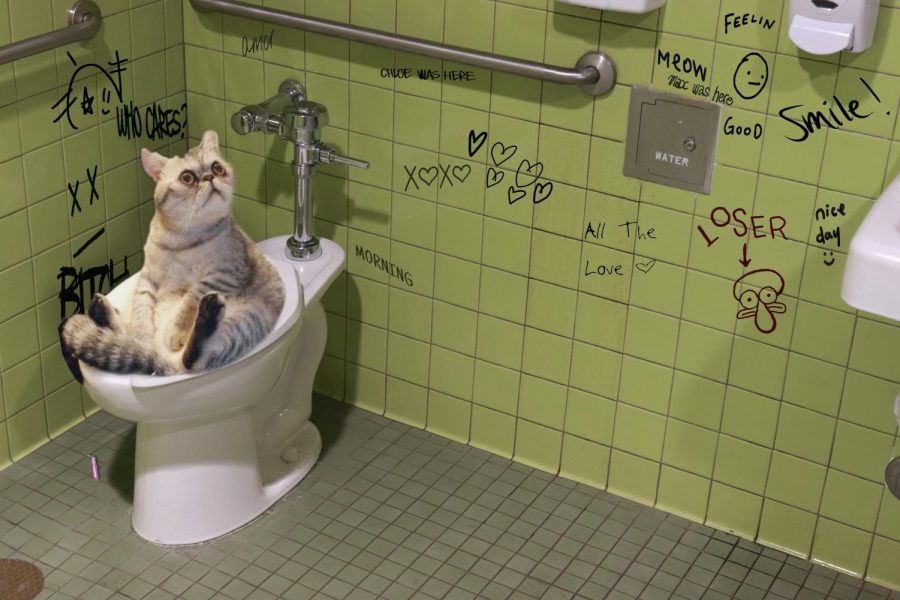Avoid Plumbing Problems: Don't Flush Cat Poop Down Your Toilet - Professional Guidance
Avoid Plumbing Problems: Don't Flush Cat Poop Down Your Toilet - Professional Guidance
Blog Article
Just how do you really feel on the subject of How to Dispose of Cat Poop and Litter Without Plastic Bags?

Introduction
As feline owners, it's important to be mindful of how we get rid of our feline good friends' waste. While it may appear hassle-free to purge feline poop down the bathroom, this practice can have detrimental effects for both the setting and human health and wellness.
Alternatives to Flushing
Thankfully, there are safer and extra accountable ways to dispose of pet cat poop. Think about the following options:
1. Scoop and Dispose in Trash
The most usual method of disposing of feline poop is to scoop it into a naturally degradable bag and toss it in the trash. Make certain to use a specialized clutter scoop and throw away the waste promptly.
2. Use Biodegradable Litter
Go with biodegradable feline trash made from products such as corn or wheat. These clutters are environmentally friendly and can be safely taken care of in the garbage.
3. Bury in the Yard
If you have a yard, consider burying feline waste in an assigned area away from vegetable gardens and water sources. Make sure to dig deep sufficient to avoid contamination of groundwater.
4. Set Up a Pet Waste Disposal System
Invest in an animal waste disposal system specifically designed for pet cat waste. These systems make use of enzymes to break down the waste, minimizing odor and environmental impact.
Wellness Risks
Along with environmental concerns, purging feline waste can also pose wellness dangers to humans. Pet cat feces may contain Toxoplasma gondii, a bloodsucker that can cause toxoplasmosis-- a potentially serious health problem, particularly for expectant women and people with damaged immune systems.
Ecological Impact
Purging feline poop presents dangerous virus and parasites into the water system, posing a considerable threat to aquatic ecological communities. These contaminants can negatively influence marine life and compromise water high quality.
Verdict
Liable pet possession extends beyond giving food and sanctuary-- it also involves proper waste administration. By avoiding purging feline poop down the bathroom and selecting different disposal approaches, we can decrease our ecological impact and secure human health and wellness.
Why Can’t I Flush Cat Poop?
It Spreads a Parasite
Cats are frequently infected with a parasite called toxoplasma gondii. The parasite causes an infection called toxoplasmosis. It is usually harmless to cats. The parasite only uses cat poop as a host for its eggs. Otherwise, the cat’s immune system usually keeps the infection at low enough levels to maintain its own health. But it does not stop the develop of eggs. These eggs are tiny and surprisingly tough. They may survive for a year before they begin to grow. But that’s the problem.
Our wastewater system is not designed to deal with toxoplasmosis eggs. Instead, most eggs will flush from your toilet into sewers and wastewater management plants. After the sewage is treated for many other harmful things in it, it is typically released into local rivers, lakes, or oceans. Here, the toxoplasmosis eggs can find new hosts, including starfish, crabs, otters, and many other wildlife. For many, this is a significant risk to their health. Toxoplasmosis can also end up infecting water sources that are important for agriculture, which means our deer, pigs, and sheep can get infected too.
Is There Risk to Humans?
There can be a risk to human life from flushing cat poop down the toilet. If you do so, the parasites from your cat’s poop can end up in shellfish, game animals, or livestock. If this meat is then served raw or undercooked, the people who eat it can get sick.
In fact, according to the CDC, 40 million people in the United States are infected with toxoplasma gondii. They get it from exposure to infected seafood, or from some kind of cat poop contamination, like drinking from a stream that is contaminated or touching anything that has come into contact with cat poop. That includes just cleaning a cat litter box.
Most people who get infected with these parasites will not develop any symptoms. However, for pregnant women or for those with compromised immune systems, the parasite can cause severe health problems.
How to Handle Cat Poop
The best way to handle cat poop is actually to clean the box more often. The eggs that the parasite sheds will not become active until one to five days after the cat poops. That means that if you clean daily, you’re much less likely to come into direct contact with infectious eggs.
That said, always dispose of cat poop in the garbage and not down the toilet. Wash your hands before and after you clean the litter box, and bring the bag of poop right outside to your garbage bins.
https://trenchlesssolutionsusa.com/why-cant-i-flush-cat-poop/

As a fervent reader on How to Dispose of Cat Poop and Litter Without Plastic Bags, I think sharing that excerpt was a great idea. Those who liked our blog post plz make sure you remember to pass it around. Thanks for going through it.
Schedule And Pricing Report this page